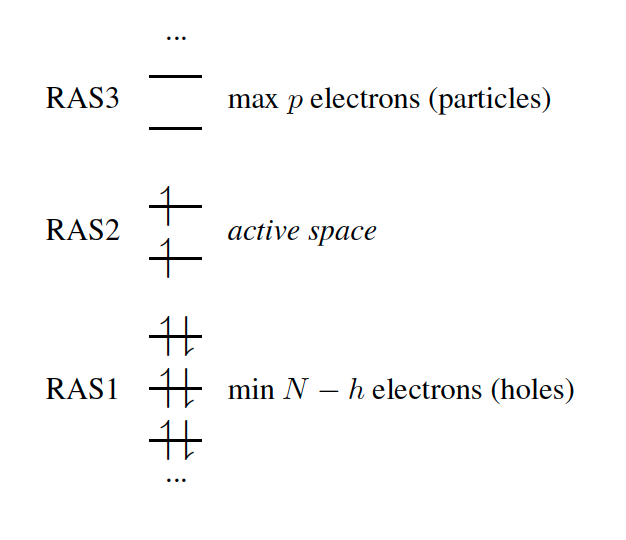In the RAS formalism, we divide the orbital space into three subspaces called RAS1, RAS2 and RAS3 (Fig. 7.2). The RAS-CI states are defined by the number of orbitals and the restrictions in each subspace.

The single reference RAS-CI electronic wave functions are obtained by applying a spin-flipping or excitation operator on the reference determinant .
| (7.109) |
The operator must obey the restrictions imposed in the subspaces RAS1, RAS2 and RAS3, and can be decomposed as:
| (7.110) |
where contains all possible electronic promotions within the RAS2 space, that is, a reduced full CI, and the rest of the terms generate configurations with different number of holes ( super-index) in RAS1 and electrons in RAS3 ( super-index). The current implementation truncates this series up to the inclusion of hole and particle contributions, i.e. the first three terms on the right hand side of Eq. (7.110).